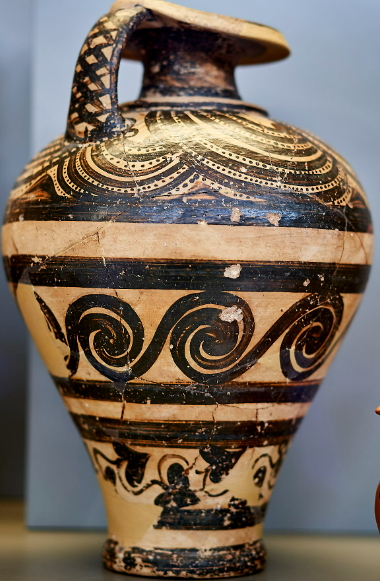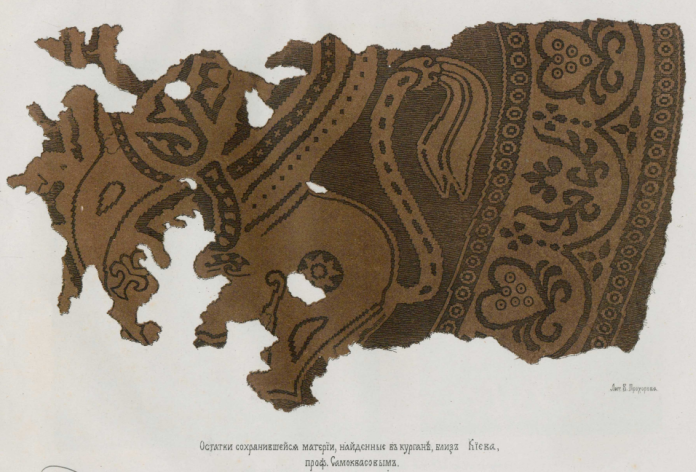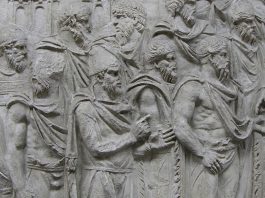What could that ornamentation be? The author of this article thinks that it is a representaion of an ivy leaf. We see this plant on the ceremonial bowl from Solokha Royal Barrow. British archaeologist Arthur Evans (1851 – 1951) who spent 40 years of his life excavating the Palace of Knossos at Crete, wrote that ivy was a sacral plant for both Minoan and Mycenaean civilizations: “This ‘Sacral Ivy motive’ and the ‘Ogival Canopy’, play a very important part at this epoch, both in Crete and on the Mainland side. The Sacral Ivy decorates some of the finest ‘amphoras’ from Kakovatos. More than this… Minoan potters, working oversea, introduced this motive on the royal Hittite wares”. What is even more interesting, ivy-leaf ornamentation was also present in the funeral decorations of the graves of that civilization. According to A. Evans, “the fully developed naturalistic form of the ivy-leaf… also finds a place in the decorative repertory of the later phase (ca. 1300 BC). It is illustrated by the well-known jug from the First Shaft Grave at Mycenae (see picture below) which is closely paralleled by the designs on an amphora from a tholos tomb of the Messenian Pylos”.”Cradle of Civilizations” book explores other striking parallels between Scythia and the civilizations just mentioned. MAIN ARTICLE






